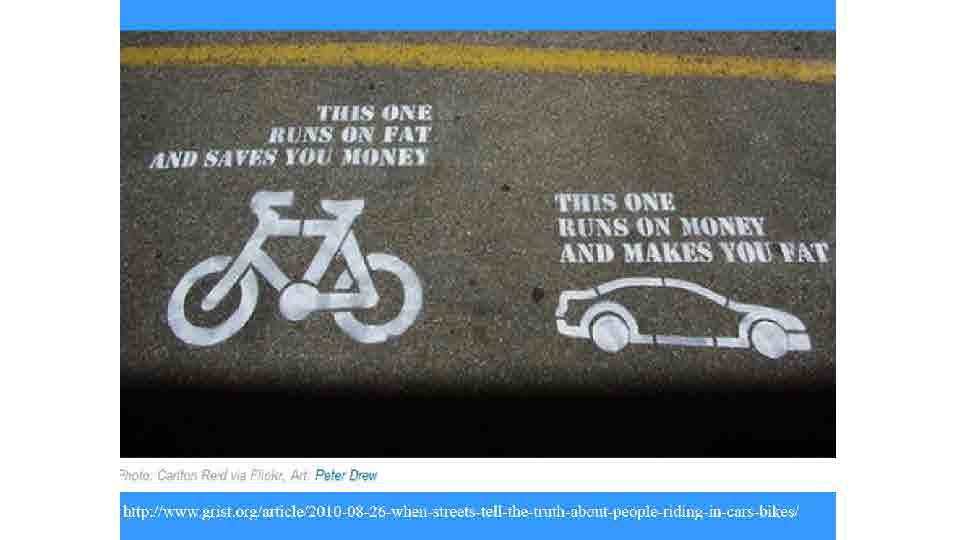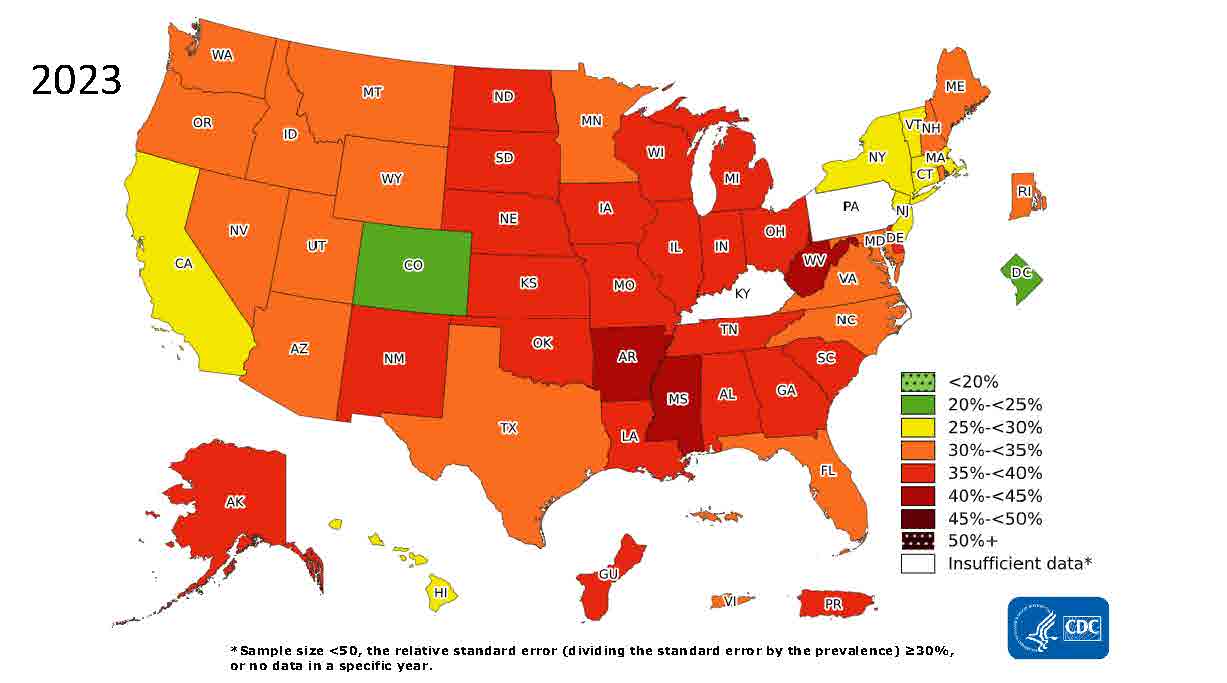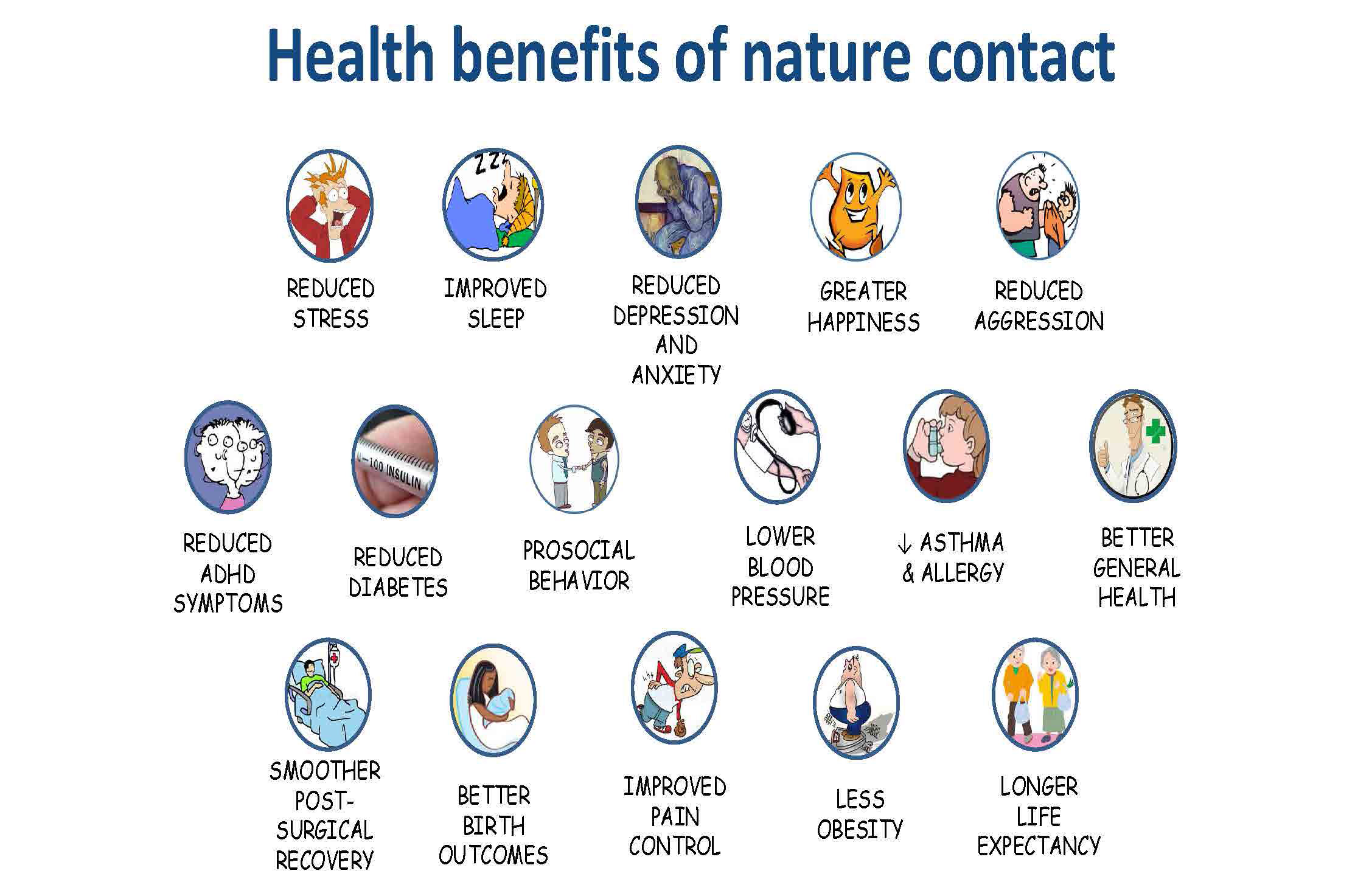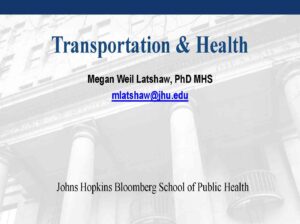How Transportation Shapes Our Health: Key Insights
Those of us who were lucky enough to attend Bike Maryland Day in Annapolis this month were treated to a very informative presentation by Dr. Megan Weil Latshaw from the Johns Hopkins Bloomberg School of Public Health. In her presentation, she outlined how our daily transportation choices affect our well-being and what needs to be done to make those healthy choices easier to make.
Full credit to Dr. Latshaw for the presentation and graphics. Download the full presentation here.
Here are some of the key takeaways:
1. The Health Costs of Driving
Driving not only increases the risk of injury but also impacts air quality, leading to respiratory and cardiovascular health issues. In Maryland alone, approximately 110,000 to 120,000 vehicle crashes occur annually, resulting in 500 to 550 deaths—including 100 to 150 pedestrian and cyclist fatalities. Additionally, poor air quality exacerbates conditions like asthma, heart attacks, and cancer, affecting tens of thousands of residents each year.
2. Physical Inactivity and Its Consequences
A car-centric culture contributes to physical inactivity, which is linked to chronic diseases such as heart disease, type 2 diabetes, and obesity. Nationally, only 1 in 4 adults meets the recommended physical activity guidelines. In Maryland, 21% of adults report no physical activity in the past month, driving up healthcare costs by an estimated $117 billion annually.

3. Growth of Self-Reported Obesity in the US
The prevalence of self-reported obesity among U.S. adults has steadily increased over the past decade. According to data from the Behavioral Risk Factor Surveillance System (BRFSS), obesity rates have risen consistently from 2011 through 2022. This upward trend is particularly concerning given the strong association between obesity and chronic health conditions such as diabetes, cardiovascular disease, and certain cancers. Addressing the root causes, including limited access to active transportation and healthy food options, is crucial in reversing this trend.

4. Decline in Active Transportation Among Children
The number of children walking or biking to school has dropped significantly over the decades. In 1969, 48% of children aged 5-14 walked or biked to school; by 2009, that figure had fallen to just 13%. This decline contributes to rising childhood obesity rates and other health concerns.
In 1969, 48% of children aged 5-14 walked or biked to school; by 2009, that figure had fallen to just 13%.
5. Inequities in Healthy Food Access
Transportation barriers can limit access to healthy foods, especially for low-income communities. Many underserved areas are considered “food deserts,” where fresh, nutritious food is not readily available. Improving public transit and walkable infrastructure can help bridge this gap and support better nutrition.
6. The Mental and Physical Benefits of Nature
Access to green spaces has measurable benefits, including reduced stress, improved mental health, and lower rates of chronic disease. People who live near nature experience better sleep, lower blood pressure, and improved social connections, all of which contribute to a higher quality of life

7. Social Capital and Community Well-Being
Transportation options like public transit, walking, and biking foster social interaction and community engagement. Increased social capital—the time and energy available for social and civic participation—is associated with better mental and physical health outcomes.
Dr. Latshaw’s presentation about the links between public health and active transportation is available on the Bike Maryland YouTube channel. In addition, you can download the full presentation PDF by clicking below:

The Path Forward: Making Active Transportation Easier
To promote public health, Dr. Latshaw advocates for policies that prioritize active transportation. These measures include enhancing pedestrian and cycling infrastructure, improving public transit, and designing communities that make the “healthy choice the easy choice.”
By reducing car dependence, we can lower pollution, decrease traffic-related injuries, and foster healthier, more connected communities.
For more insights, download the full presentation by Dr. Megan Weil Latshaw, Johns Hopkins Bloomberg School of Public Health.
Many thanks to Drs. Brian Schwartz, Dick Jackson & Howie Frumkin.
